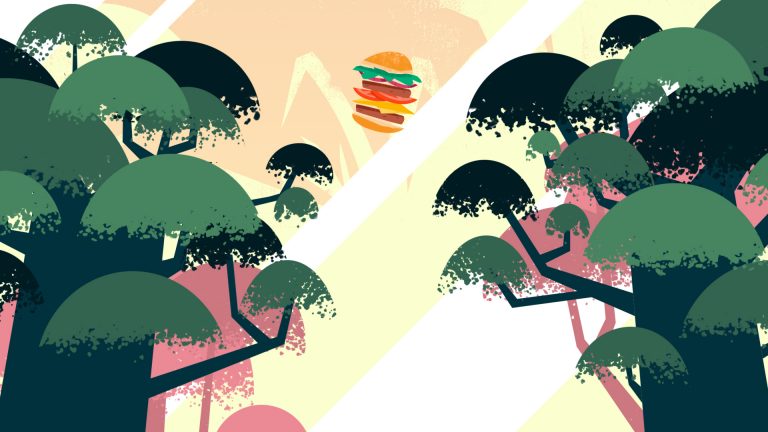De natuur beschermen met animatie: kan dat?
Ons wapen in de strijd voor natuurbehoudInspiratie

How do you make a difference? The answer is simple: do what you can. And for in60seconds, doing what we can means: creating animations! With a small team, we chose to develop animations that can make a difference. We pitched our idea, were granted a budget, and went out to try and make a difference. You can see the result here!

Our planet’s not doing so well. More and more habitats are being lost due to overpopulation, global warming and pollution. And nature is coming under pressure worldwide.
As a young company, we have many colleagues who care about this subject. And very often, they take action! Some people only eat vegetarian, others even go vegan. Some leave the car at home more often. The home owners among us make sure that their new house is well insulated. In this way we all do our part… but we didn’t think that was enough yet.
After all, real impact can only be achieved if you also bring other people into action. Action that goes further than you, your family or your company. But how do you start? All the examples we found point in the same direction: stay close to yourself and make use of what you are good at.
To us it was obvious what our action should be: an animation! Because this problem has many faces, we first had to decide what to focus on. What affects us personally? Which problems that the world is facing are the worst? And what do others do? In the end we decided to focus on problems that normal people like you and me can have an impact on in everyday life. Two subjects immediately stood out: eating less meat and avoiding single-use plastics.
Meat eaters won’t like to hear it, but the meat industry is the biggest polluter in the world. Not only because tractors, cows and farms emit so much, but also because meat is not an efficient food source.
The reason for this is very simple: growing vegetable food and then eating it is efficient. Growing the same vegetables, feeding them to an animal for several years, and then eating the animal is not.
If you want to know the real impact of the meat industry, there are many factors that count: the methane gas that the animals emit, the manure that they produce and that ends up in nature, or the enormous water consumption of the entire chain. The production of 1 kilogram of beef requires more than 15,000 liters of potable water.
We decided to focus our animation on a related problem: deforestation. Every second, around the world, a soccer field-sized chunk of forest is cut down to make room for agriculture. In particular for the production of beef or fodder. That is why the message of this animation is clear: eat less meat! The rainforest, but by extension the whole planet benefits from this.
 Click on the picture to zoom in. Via ourworldindata.org
Click on the picture to zoom in. Via ourworldindata.org
– Paul Goos, Animator
– Laura van der Steen, designer
– Job Pennekamp, copywriter


See more of our work via this button.